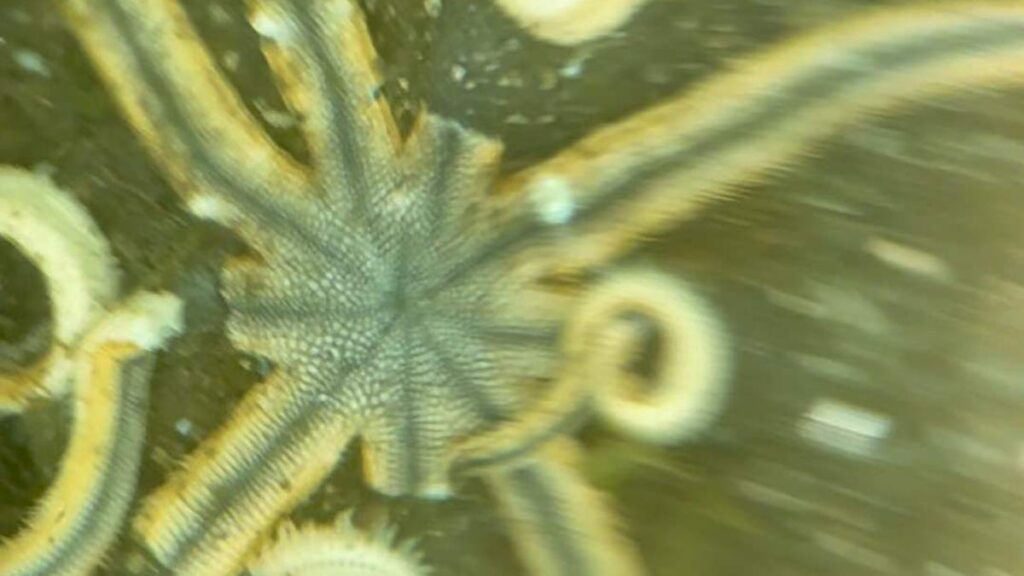Lake Worth Lagoon Faces Ecological Challenge with First Case of Sea Star Wasting Syndrome in Florida
Unprecedented Discovery in Lake Worth Lagoon
In July 2024, a concerning ecological event unfolded in Palm Beach County’s Lake Worth Lagoon. Ecologist Alex Romer discovered numerous nine-armed sea stars exhibiting severe signs of distress, including lesions and twisted arms. This troubling phenomenon marks the first documented case of sea star wasting syndrome in Florida’s Atlantic coast, raising alarms about the potential ecological impact on local marine ecosystems.
Symptoms and Affected Marine Life
Upon entering Lake Worth Lagoon, Romer found dozens of sea stars exhibiting symptoms typical of sea star wasting disease—conditions that threaten not just these creatures but the biodiversity of the estuary itself. Key symptoms included:
- Twisted arms
- Lesions with white sores
- Disintegration of bodies
Approximately 75 sea stars were affected in the area known as Lake Worth Cove, particularly around John D. MacArthur Beach State Park. Romer noted a stark difference between the sick sea stars and healthy specimens found in other areas of the lagoon.
Understanding Sea Star Wasting Syndrome
Researchers, including those at the University of Florida’s Institute of Food and Agricultural Sciences, have characterized this issue as part of a broader syndrome potentially triggered by environmental changes. Factors contributing to the onset may include:
- Elevated water temperatures (over 1.8 degrees above average)
- Changes in salinity levels
- Pollution from stormwater runoff
The sea star wasting disease was previously implicated in millions of deaths along the Pacific coast from 2013 to 2015, initially thought to be caused by a virus, but more recent studies suggest a complex interplay of environmental factors.
Ecological Implications
The implications of declining sea star populations could be far-reaching. Sea stars play a crucial role in marine ecosystems by foraging for worms and shellfish, which helps to mix sediment. A decline in their numbers may lead to:
- Increased algal overgrowth
- Lower health of seagrass habitats
- Fewer nursery spots for young sportfish
As Deborah Drum, director of Palm Beach County’s Environmental Resources Management Department, stated, “If their numbers drop, that sediment-mixing slows, giving algae a chance to overgrow meadows.”
Localized Event or Widespread Issue?
Local officials indicate that the sea star fatalities may be an isolated event. Drum noted that healthy sea stars have been consistently found in the northern reaches of the lagoon, reaffirming the belief that this incident is localized.
Restoration Efforts at Lake Worth Lagoon
Palm Beach County is actively working to enhance and restore the lagoon’s habitats, investing in initiatives such as:
- Building oyster reefs
- Creating mangrove islands
- Restoring seagrass meadows
These restoration efforts aim to improve the overall health of the lagoon ecosystem, making it more resilient to environmental changes and protecting vulnerable species.
Community Involvement
Romer encourages the public to participate in conservation efforts by reporting unusual sightings in local marine life to the Florida Fish and Wildlife Conservation Commission at 888-404-FWCC or by documenting their observations on community science platforms like iNaturalist.
Conclusion
The recent discovery of sea star wasting syndrome in Lake Worth Lagoon serves as a cautionary tale about the fragility of marine ecosystems in Florida. Continued public engagement and restoration efforts will be critical to ensuring the vitality of these habitats for generations to come.
For further information on ecological restoration efforts and updates on marine health, visit the Florida Department of Environmental Protection.
This article aims to provide a comprehensive overview of the recent ecological challenges facing Lake Worth Lagoon while optimizing for SEO to ensure accessibility and reach.


